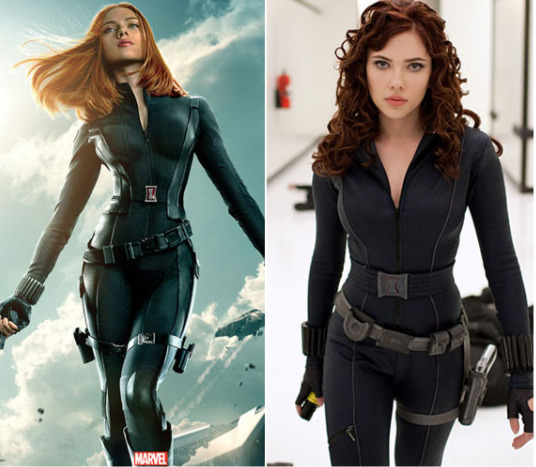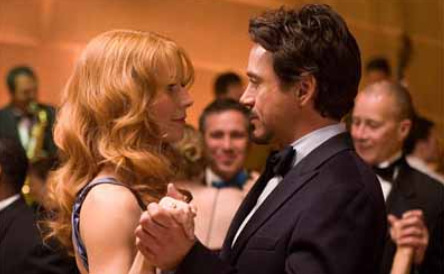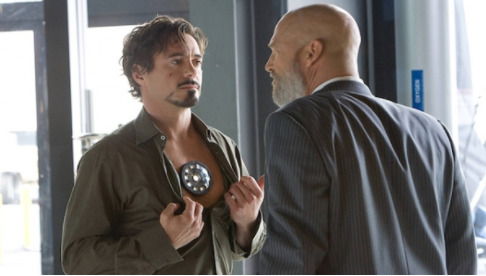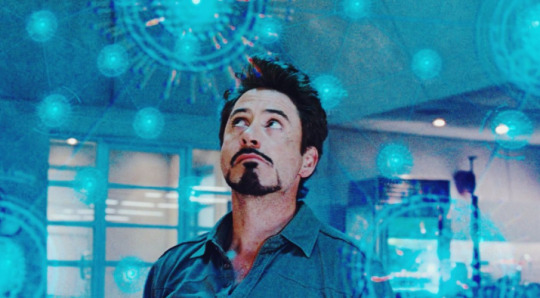#I'm talking films where they so clearly just ti make peak masculinity
Text
Making a list of the biggest macho movies which accidentally made gay dramas...
I'll start:
TOP GUN
THE EAGLE
TOP GUN: EXES MAVERICK
...now you guys
#accidentally gay media#I'm talking films where they so clearly just ti make peak masculinity#and instead there is simply no heterosexual explanation#rae rambles#top gun#top gun maverick#the eagle of the ninth#the eagle
10 notes
·
View notes
Text
Feminist, Queer, Playboy, Philanthropist: Why Ironman Belongs to the Shes, Gays, and Theys
Introduction:
This material originally comes from a media critique project I did for an undergrad philosophy course and I've attempted to adapt it into a tumblr post that doesn't make your eyes bleed. I may or may not have been successful. Upfront, I'm giving you a trigger warning for discussion of sexual assault/rape. If you'd like to skip that part of the analysis, mind the red content warning [start/end].
Trix, what are you up to today? Well, I’d like to present an alternative narrative interpretation of the capstone of the MCU. At face value, Tony Stark shows us a wise-cracking, suave, and hyper-masculine superhero. His soundtrack is AC/DC and he arrives on the battlefield in a shower of gold sparks and hydraulics, wearing sunglasses that cost more than my uterus would fetch on the black market. However, this character presents us with so much more than just a hyper-masculine caricature of straight, cis heroism. Not only does he embody typically “feminine” film tropes—such as the hypersexualized “fighting-fucktoy” role, the policing of his body and promiscuity, and the climactic “rape scene” in which his predatory father-figure drugs him and steals his “heart”—additionally, he embodies classically queer film tropes. Unlike most male action-movie protagonists, his story line is an identity crisis at heart, culminating in a climactic “coming out” scene. His character is promiscuous and spurned for it, and camp is a constant underlying theme in his character design as a whole.
I explore these themes in two main parts: the femme and the queer. We'll start with the femme.
Hyper-Masculinity & Tony Stark
In order to understand the subversive nature of Tony Stark, we must first establish the typical nature of hyper-masculine and the hyper-feminine character tropes. Before we can ask the question, “how is this character coded as femme?'' We must first ask, “how is this character coded as masc?”. Further, what do these tropes tell the audience about those characters? Ultimately, the hypermasculine caricature lends power to the subject while the hyperfeminine caricature strips the subject of all agency.
Hypermasculinity is defined, generally, as the exaggerated portrayal or the reinforcement of “typically male stereotypes” (typical male meaning, in this context, that of a Westernized man) such as aggression, strength and power (both physcial and otherwise), as well as sex appeal, and integrity. Hypermasculinity takes a keen focus on the physical male form as a dominating force (1). A hypermasculine character, then, would be one that portrays a domineering, powerful man that is above his peers in some way, and is sexually desirable, in that he exemplifies a pornified picture of a male physique. This desirable and desiring caricature of manhood “socializes boys to believe that being a man means being powerful and in control” (2).
In contrast to this idea of hypermasculinity is the media’s typical portrayal of women. The typical hyperfeminine characterization of women in media is that of a passive, pretty, and overtly sexualized side-character with little agency or autonomy within the story. This is true of both blockbuster hits starring men and movies starring women, too. “We had many more interesting characters on screen in the '20s, '30s, '40s than we do now… They could be the femme fatale and then turn around and be the mother and then turn around and be the seductress, and then turn around and be the saint, and we accepted that. They were complex human beings” (2). This is no longer the case for a typical role for women on screen.
The documentary Miss Representation (2) presents a common caricature that a woman in Hollywood might find herself portraying. Action movies with a female lead surely must exhibit agency in their own story lines. However, the female-action-movie-lead is dubbed the “fighting fucktoy” by Miss Representation. Although she makes her own decisions and it is her narrative that drives the story, she primarily exists as eye-candy. Thus, even the “fighting fucktoy” is just that to audiences--a “fucktoy”. She may be “strong” but primarily, she must be pretty. The MCU character Black Widow perfectly exemplifies the “fighting fucktoy”. Her physical strength may be unquestioned, but primarily it is her beauty that is the focus on-screen. Never do we see her fighting in a t-shirt and sweatpants. Even outside of the skin-tight deep-vee catsuit, Black Widow’s plain clothes outfits consist of tight jeans and even tighter shirts.

This is true for both hyperfeminine and hypermasculine stories. Both the men and women starring in mainstream productions are expected to exemplify a western ideal of peak beauty standards at all times. However, where the hypersexualization of male’s bodies is associated with power, dominance, and strength, the sexualization of women’s bodies is linked to submission, frailty, and possession. Hence the name, “fighting fucktoy”. Her beauty does not make her powerful, it makes her a “toy”, an object, a possession. The sexualization of men in media gives them power within their narratives. For women, it does the complete opposite. It makes them objects, even when they are strong. Beauty and sex make them the victims of their own stories. Ultimately, the hypermasculine male character is envied and emulated, not coveted.
Ironman: Femme Fatale
The storyline of the first Iron Man movie is one concerned with bodily autonomy in a way typically reserved for women--Tony Stark is presented as a fighting fucktoy with an unattainable heart. Not only that, he must struggle against the literal policing of his body by friends, family, and government agencies alike. This subversive, unexpected feminine story culminates in the pinnacle “rape scene” wherein a trusted older-male drugs and assaults Tony in order to take advantage of his “body”, the arc-reactor.

Let’s examine Tony’s coded “fighting fucktoy” persona in two parts: the “fighting” and the “fucktoy”. Miss Representation identifies what female leadership often looks like in movies. “When it comes to female leaders in entertainment media, we see the bitchy boss who has sacrificed family and love to make it to where she is” (2). Odd as it may seem, this perfectly encapsulates the metaphorical role of the arc reactor powering the Iron Man suits. First and foremost, the reactor represents Tony Stark’s heart. Not only is it literally located within his heart for the purpose of keeping it intact, it represents his rebirth as a caring, philanthropic man--it encapsulates Stark’s “fight”. Before his kidnapping and the subsequent implanting of the reactor, Stark was every inch the “bitchy boss who has sacrificed family and love” as well as morals themselves in order to be a war profiteer. His “fight” consists of standing up against the same system that had allowed him to amass his fortune. This “fight” is inextricably tied to his “bitchy boss” caricature as someone who has had to surrender love.

It is clear to the viewer that Stark has had to sacrifice love to get where he is in life. Many allusions are given towards the “will they won't they” nature of his relationship with Pepper Potts and Stark’s work is identified as the reason why they won’t. At the end of the movie, Stark attempts to seduce Potts, asking if she ever “thinks about that night” to which she replies, “Are you talking about the night that we danced and went up on the roof, and then you went downstairs to get me a drink, and you left me there, by myself?” The viewers are aware that the reason Stark ran off was because he had received news that Stark weapons had gotten into the wrong hands. Later, Potts will gift him the original arc reactor with the engraving: PROOF THAT TONY STARK HAS A HEART surrounding it. In an unconventional way, Stark portrays the frigid boss who sacrificed everything to get where she is in his titular fight against a war profiteering machine.
Next, let’s examine his role as the fucktoy. This is a more subtle theme throughout the film, present in body language and subtext. I will focus mainly on scenes which present a femme-coded sexualization--scenes where emphasis on Stark’s body does not lend Stark power, but instead strips him of his autonomy. Take for example the scene pictured below. In this scene, Stark bares his chest to Stane. He is quick to cover up and fruitlessly attempts to redirect Stane’s curiosity. Much like a scene where an attractive woman shows skin, the emphasis is placed on Stark redirecting Stane’s predatory interest. Notice the tension in Stark’s stance, the challenge in his eyes and the contrasting pose of Stane, mid-motion, pushing so close into Stark’s space. Stane is clearly coded as the aggressor once the reactor comes out. The same effect is observed as when a woman bares skin--an apparent loss of autonomy as other characters (and even the cinematography itself) takes a pornographic view of her body. Instead of a powerful male character baring his chest in the heat of a battle, giving the audience a glimpse of corded muscle and strength, this scene leaves the viewer feeling uncomfortable on Stark’s behalf.

[TW Start] This femme-coded sexualization that leads ultimately to a loss of autonomy again rears its head in the titular “rape scene”. This is the clearest instance of the reactor--a literal part of Stark’s body, symbolically present as his heart--lends itself to his victimization. Just as a hypersexualized female character with no bodily autonomy, Stark’s bodily autonomy is forcefully violated so that a powerful male figure in his life can exploit a part of him. This theme becomes horrifyingly clear when the scene is examined up close.

Notice the position of their bodies. Once again, Stane towers over Stark, pressing into his space on all sides. In the first image, to the right, he has an arm draped over the back of the couch--a parody of a romantic or perhaps affectionate gesture from one intimate partner to another. Stane visibly radiates power in this position, even if the viewer were unaware of Stark’s paralyzed state. Stane’s shoulders are squared, even sitting down. The position of the reactor in his hand is relaxed and undeniably taunting. Looking at Stark himself, the horror and powerlessness of his situation is clear. His eyes are open, but almost appear to be unseeing. He is not looking directly at the reactor nor at Stane. In fact, it seems as though his eyes are looking below the reactor and to the room at large. I can only describe his expression as hollow--the blank eyes fixed out to something the viewers cannot see, his mouth partially open, his skin sickly pale.

In the second image, pictured above, Stane leers over Stark’s body, cradling his head in, once again, a parody of a lover’s tenderness. He coaxes Stark’s now limp form down onto the couch, having just paralyzed him with a fictional, technological nerve agent. The horror is shockingly clear on Stark’s face and the perverse joy is just as clear on Stane’s. This scene itself is an undeniable parody of rape, or, at the very least, physical assault. [TW End]
Tony Stark presents us with a clear, femme-coded character as his story line draws upon classicly feminine tropes wherein the sexualization of the character’s body is exploitative at heart and leaves them vulnerable to physical predation. In this way, though he is strong, his “body” makes him the victim of his own story. Not only that, his character arc itself travels from the heart-less profiteer to the philanthropic man with a heart of gold, drawing upon another classically femme-caricature of the “bitchy boss”.
Queer Tropes & The Closet
Queer tropes are much harder to draw upon than that of feminine tropes. Queer tropes in film developed in a time of great censorship and as a result are often subtle. There are three main tropes I would like to reference for the purposes of this critique. Within the Iron Man franchise, there exists a distinct sense of camp, a problematized sexual promiscuity, and, ultimately, an identity-reveal/coming out storyline.
One of the most obvious of these tropes is camp. Camp is “defined as the purposeful and ironic adoption of stylistic elements that would otherwise be considered bad taste. Camp aesthetics are generally extreme, exaggerated and showy and always involve an element of mockery” (3). Camp is present in queer culture most commonly in the ball and drag scenes. Camp is the gaudy, the glitzy, the over-the-top, the classic-but-not, the in-your-face… Camp is all of the above and more. This is why it is so easily recognizable to audiences.
The Advocate identifies a series of seventeen queer caricatures in media for consideration, one of them being that of the “promiscuous queer”. Everyone knows the myth of the promiscuous bisexual, even when the reality is that bisexual individuals are no more or no less likely to view monogamy as “sacrificial” than gay or straight individuals (4). The stereotype of the promiscuous bisexual is inaccurate and harmful, and they are by no meals alone in being labeled overly promiscuous by a general audience. The “promiscuous queer” is defined as a character that may struggle with emotional intimacy and, as a result, sleeps around to mask the love they are missing in their life. “Films going back as far as the ’80s British period piece Another Country have featured gay male characters who use sex to cover for their inability to feel true intimacy with another human being” (5). Among their list of guilty perpetrators are Queer as Folk, The L Word, The Good Wife, and How to Get Away With Murder.
The last trope I’d like to present is that of the “coming out” story. Far from being problematic, the “coming out” is often necessary when telling a queer story. Coming out storylines can be problematized when they are presented as “Big Dark Secrets” that weigh heavily on a person until they are spoken. Ultimately, coming out is a choice. Many queer people choose to come out while many do not. There are many people who fall in between--some people may be comfortable being out to select individuals while not to others or to the world at large. In any case, people can be satisfied and fully fulfilled in any of those choices. Coming out stories are undeniably part of queer culture in media. Consider the recent hit, Love Simon alongside Transparent, Empire, Supergirl, and Glee.
Camp, Secrets & Sex
Through the camp of the Iron Man persona, the problematized sexuality of Stark, and the underlying theme of a “coming out” journey, Tony Stark presents audiences with a classically queer experience in film. Take the Iron Man suit itself. The iconic red and gold, the whine of the repulsors, the sleek metal edges and the furious glow of the arc reactor all scream camp. The red and the gold, the opening bars of Back In Black, the facial hair cut into odd spikes, and the sunglasses do, too. Each and every part of the Iron Man persona is camp. “Stylistic elements that otherwise would be bad taste”... talk about gold-plated biceps and a bright red, glowing chest piece! It's camp, baby!

The problematized sexuality of Stark is harder to see as reminiscent of a queer trope. Take, for example, one of the first scenes in the movie. “I do anything and everything that Mr. Stark requires, including, occasionally, taking out the trash”, Potts remarks in reference to a one-night stand she’s ushering out of Stark’s home. Here, Potts implies that Stark sleeps with “trash”. The following scene gives us the feeling that this is not a one-off occurrence. As Potts enters the room, Stark asks, “how’d she take it?” References to his repeated promiscuity are obvious. “Playboy” is an integral part of his persona. Equally obvious is Potts’ disapproval. Taking these inferences of his playboy lifestyle with what viewers know of Stark’s lack of attachments--his “bitchy boss” exterior, if you may--it appears as though his promiscuity is a symptom of the promiscuous queer stereotype.

“Don’t ever ask me to do anything like that ever again,” Potts says after removing the initial arc reactor model from Stark’s chest cavity. “I don’t have anyone but you,” Stark replies. The viewer has a clear picture of Stark as a playboy type who is truly lonely on the inside--who struggles with emotional intimacy. This struggle is evident, given that Potts, Stark’s secretary and co-worker, is the only person in his life he trusts to assist him in what is essentially open heart surgery. His playboy lifestyle mirrors the circumstances of the promiscuous queer trope in media.
Finally, we come to the last scene of the movie-- the climactic reveal. “I am Iron Man”, Stark says. This scene most clearly illustrates a queer story-line. Stark reveals his “identity”, shedding his last secret, and declares to reporters (and effectively the world) that he is Iron Man. To understand how this scene evokes such a strong sense of queer experience in viewers, I’d like to reference another recent in-universe identity reveal in the Marvel Cinematic canon. In Spiderman: Far From Home, the end-credit scene shows Peter Parker reacting in horror to his identity being leaked via doctored footage from the villain Mysterio. This scene can read as nothing but a deep violation. Even the main characters themselves react in abject horror at the news. The Spiderman identity reveal and the Iron Man identity reveal are two sides of the same coming-out process. In one, the character had full agency. In the other, the reveal was non-consensual, a complete violation. It is clear that both of these scenes draw explicitly upon themes that resonate particularly with queer audiences.
To Infinity(War) and Beyond
Growing up, I latched onto Iron Man and Tony Stark as an outlet for my “otherness”. I was well and truly obsessed with the character for reasons that I could not really put into words. He was weird, he was loud, and he was, frankly, unapologetic about any of it. I remember very clearly on my first day of tenth grade listening to Thunderstruck by AC/DC in the car and putting on the brightest shade of red lipstick I could find. Tony Stark gave me confidence. He gave me a voice. Throughout high-school I must have watched the first Iron Man movie upwards of twenty, maybe even thirty times. It was a comfort to me because it showed experiences I resonated with and it showed a strong character recovering from them. Tony Stark rose from the ashes every time and gave me the strength to rise from my own ashes every time he did.

Our heroes can be anything. And Tony Stark was mine.
#thechestnuthead#here you go#yall asked for it#long post#really fucking long post#meta#trixree speaks#ironman#tony stark#marvel meta#analysis#this took a long time rip#if yall want the full paper you can hit me up for a PDF#my posts#trixree gets meta
26 notes
·
View notes